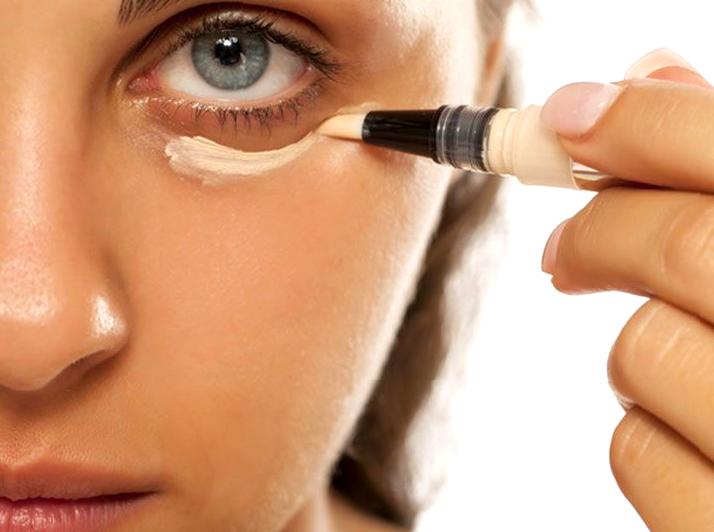Choosing the right concealer can be a transformative step in your makeup routine. The ideal concealer not only covers imperfections but also enhances your natural beauty. With a plethora of options available, it can be daunting to select the one that meets your needs. This article will guide you through key factors in choosing the right concealer based on skin type, coverage, undertone, and application techniques.

Understand Your Skin Type
Determining your skin type is the first step in finding the perfect concealer. Skin types generally fall into four categories: oily, dry, combination, and sensitive. For oily skin, a matte formulation is ideal as it helps control shine and prevent breakouts. Conversely, individuals with dry skin should opt for liquid or cream concealers that offer hydration and a dewy finish. Combination skin can benefit from a versatile formula that balances both oil and moisture. Sensitive skin types should look for fragrance-free or hypoallergenic products to avoid irritation. Understanding your skin type ultimately lays the foundation for a successful concealer choice.

Choose the Right Coverage Level
Next, consider the level of coverage needed for your skin concerns. Concealers typically come in three types of coverage: sheer, medium, and full. Sheer coverage is perfect for a light touch-up to even out skin tone without feeling heavy; it’s ideal for minimal imperfections. Medium coverage can conceal dark spots and redness effectively while still maintaining a natural look. Full coverage concealers offer a more opaque finish, making them suitable for covering stubborn blemishes and dark circles. Selecting the appropriate coverage type based on your needs will greatly influence the final appearance.

Determine Your Undertone
Understanding your skin’s undertone is crucial when choosing a concealer. Undertones usually fall into three categories: warm, cool, and neutral. Warm undertones typically have a golden or peachy hue, so concealers with yellow or golden tones work best. Cool undertones, characterized by pink or blue hues, benefit from concealers with pink or lavender base tones. Neutral undertones can wear a range of shades without much fuss. To find your undertone, check the color of your veins—blue indicates cool, green indicates warm, and a mix suggests neutral. Matching your concealer to your undertone results in a flawless finish.
Application Techniques
Knowing how to apply your concealer makes a significant difference in the final look. Here are some effective application methods:
- Brush Application: Using a concealer brush allows for precision, especially for covering blemishes.
- Beauty Blender: A damp beauty blender provides a seamless, airbrushed finish, perfect for under-eye areas.
- Fingers: For cream or stick concealers, using your fingers can generate warmth, aiding in blending.
Experimenting with these techniques will help you find what works best for your chosen concealer. Whatever method you choose, always start with a small amount and build up coverage as needed for the most natural look.

Test Before You Buy
Finally, always test concealers before making a purchase. Swatch a few options on your jawline or inner wrist under natural light to see how they blend with your skin tone. Don’t forget to account for the changing seasons; your skin tone can fluctuate with sun exposure. Also, consider the texture and formula that works best for your skin type when testing. If possible, ask for samples to try the concealer over a few days. This ensures that the product suits you well in various conditions and lighting, making your final selection more informed.
Conclusion
Choosing the right concealer is essential for achieving that flawless look everyone desires. By understanding your skin type, selecting the appropriate coverage level, determining your undertone, and employing effective application techniques, you can find a concealer that truly meets your needs. Always remember to test before you buy, as this guarantees that your choice fits well with your unique complexion.
FAQs
The best concealers for dark circles often have a peach or orange undertone to neutralize bluish tints under the eyes. Hydrating formulas that reflect light, such as liquid concealers, can also help brighten the area.
2. Can I use a concealer as foundation?
While concealers are designed for targeted application, a full-coverage concealer can serve as a foundation in a pinch. However, it’s important to blend it well for a more natural look.
3. Should I set my concealer with powder?
Setting your concealer with powder is advisable to prevent creasing, especially under the eyes. A light dusting with a translucent powder can help keep it in place throughout the day.
4. How can I choose the right shade of concealer?
When selecting a concealer shade, choose one that is one or two shades lighter than your foundation for hiding dark circles. For blemishes or redness, match the concealer to your skin tone to blend effectively.
5. How long does concealer typically last?
The longevity of concealer can vary based on formulation and skin type. Typically, a good concealer lasts 6 to 8 hours with proper application and setting. However, touch-ups might be needed for longer wear.
